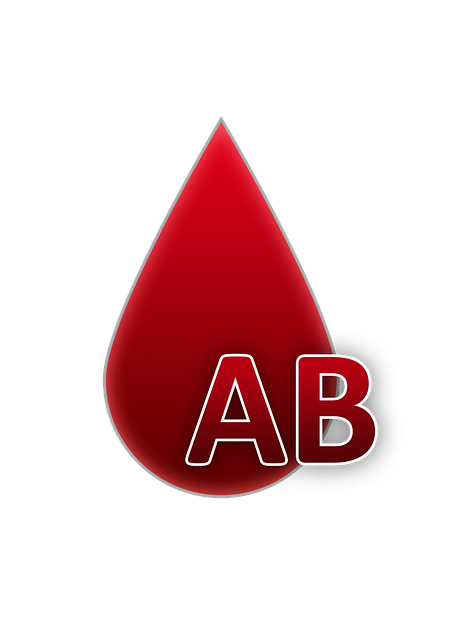Iron deficiency anemia, a common blood disorder caused by low iron levels, impacts oxygen transport and cellular function, leading to symptoms like fatigue, weakness, and concentration difficulties. Early detection through simple UK Testosterone Blood Tests is crucial for high-risk individuals. Healthcare professionals use these tests to measure key indicators such as hemoglobin levels, red blood cell count, and ferritin levels to confirm anemia severity. Treatment options include dietary changes, oral iron supplements, or IV therapy, with reference ranges for hemoglobin varying by gender in the UK. Consulting a healthcare provider ensures personalized management based on test results and overall health.
In the UK, iron deficiency anaemia (IDA) is a common health concern, impacting individuals across all ages. Understanding IDA and its symptoms is crucial for early detection. This article delves into the role of blood tests as a reliable tool for diagnosing IDA, exploring how these tests measure iron levels and haemoglobin concentrations. We’ll guide you through interpreting results and available treatment options to effectively manage IDA, ensuring optimal health outcomes.
- Understanding Iron Deficiency Anemia and Its Impact
- The Role of Blood Tests in Diagnosing Iron Deficiency Anemia
- Interpreting Results and Available Treatment Options
Understanding Iron Deficiency Anemia and Its Impact
Iron deficiency anemia is a common blood disorder where the body lacks enough healthy red blood cells to carry adequate oxygen to the body’s tissues. This condition occurs when there is insufficient iron, a key component of hemoglobin, in the blood. Iron plays a vital role in transporting oxygen from the lungs to all parts of the body and ensuring proper cellular function. When iron levels are low, it can lead to fatigue, weakness, pale skin, shortness of breath, dizziness, and even heart problems. In severe cases, individuals may experience difficulty concentrating and an increased risk of infections. Understanding these symptoms is crucial for early detection, especially as simple blood tests like a UK Testosterone Blood Test can identify iron deficiency anemia effectively.
The impact of untreated iron deficiency anemia can be significant, affecting overall health and quality of life. It’s particularly important to recognize the signs in children, pregnant women, and older adults as they are at higher risk. Prompt diagnosis through blood testing enables healthcare professionals to recommend appropriate treatments such as dietary changes, iron supplements, or in some cases, medical interventions to restore iron levels and prevent potential complications.
The Role of Blood Tests in Diagnosing Iron Deficiency Anemia
In the diagnosis of iron deficiency anemia, blood tests play a pivotal role, offering crucial insights into an individual’s overall health and nutritional status. These tests are essential tools for healthcare professionals in the UK to uncover the presence and severity of iron deficiency. By examining certain blood indicators, such as hemoglobin levels and red blood cell count, doctors can effectively detect anomalies indicative of anemia.
A typical UK Testosterone Blood Test involves drawing a sample of blood to measure specific markers. In the context of iron deficiency anemia, this may include assessing ferritin levels, which store and reflect iron reserves in the body. Low ferritin levels can strongly suggest iron deficiency. Additionally, testing for transferrin saturation and unsaturated iron-binding capacity provides further evidence to support or refute the diagnosis. These tests are vital for personalized treatment plans, ensuring individuals receive appropriate interventions to address their iron deficiency anemia effectively.
Interpreting Results and Available Treatment Options
Interpreting Your Results:
After your iron deficiency anemia testing, the healthcare provider will review your blood test results to determine if you have anemia and its severity. Common indicators include lower-than-normal hemoglobin (Hb) or hematocrit (Hct) levels. Hemoglobin is a protein in red blood cells that carries oxygen, so low Hb suggests reduced oxygen delivery to body tissues. In the UK, a typical reference range for Hb is 13.5-17.5 g/dL for men and 12-15 g/dL for women. If your results fall outside this range, further evaluation is required.
Treatment Options:
Once diagnosed, iron deficiency anemia can be effectively managed through various means. The primary goal is to increase iron levels in the body. This can involve oral iron supplements, which are typically well-tolerated but may cause side effects like stomach upset. In more severe cases or for rapid improvement, intravenous (IV) iron therapy might be recommended. Lifestyle changes, such as adopting a diet rich in iron-containing foods (e.g., leafy greens, beans, lean meats), can also play a crucial role in managing and preventing future episodes of anemia. Consult your healthcare provider to discuss the best course of action based on your specific test results and overall health status, including any considerations for UK Testosterone Blood Tests if relevant.
Iron deficiency anemia is a common yet treatable condition, and blood tests play a crucial role in its diagnosis. By understanding the impact of this anemia and interpreting blood results accurately, individuals in the UK can access appropriate treatment options to restore overall health. Just as a testosterone blood test helps assess hormonal balance, iron deficiency testing is essential for identifying and addressing nutritional deficiencies, ensuring optimal well-being.
